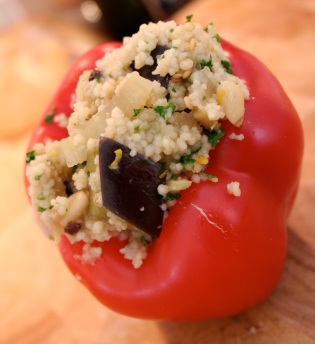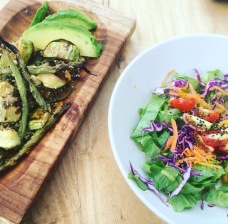The ancient yogis taught that one of the first and most important of spiritual practices was food sadhana, the art and discipline of what, when, where, why and how we put food into our bodies.
For physical, emotional, and mental health, it may not be enough to just load up on organic fruits, veggies, and grains. Even if we eat super-healthful food, if we consume mindlessly, eat in a rush, or shovel it in while texting or similarly distracted, the body can’t settle into its digestive processes. And if we eat while feeling sad, angry, or under significant stress, the digestive fire gets weakened, and instead of feeling satisfied, the mind will feel disturbed post-digestion.
Here are 10 simple Ayurvedic tips for cultivating calm-body nutritional habits:
Prepare your food with love. The energy of the cook is always in the food. Avoid eating meals that may have been prepared in anger or resentment. Ayurveda understands that we not only eat the food, but also the emotions of the chef. So, if you are angry or distracted and can’t seem to focus, put down the kitchen knife, pick up the phone, and order some yummy take-out instead.
Awaken to your food. Begin to bring consciousness to your eating habits. As you are preparing the food, sense that you are offering it up to your divine self. Tune into the smell of freshly baked bread, the color of sunny turmeric, or the texture of jasmine rice in your hands, even before you taste the flavors of the food.
Tune into nature. When we eat, we are not only consuming the food on our plate but also the stimulus in our environment. According to Ayurveda, the impressions we take in through the senses can disturb the mind and hinder digestion. If you are watching television or reading the newspaper, you are “ingesting through your eyes,” causing prana to move out and not inward where it needs to be for proper digestion. It is highly recommended that you eat in or near to nature. If that’s not practical, even placing houseplants within view of your table will help. Of course, birds and flowing streams are an added bonus.
Savor the chewing. Take time to chew your food slowly, until it becomes an even consistency. Ayurvedic practitioners recommend chewing each bite of food 30-50 times so that you begin to break down the food in the mouth before it travels the rest of the digestive tract. Complete chewing allows complex carbohydrates, sugars, oils, proteins, and other minerals to reach maximum levels of absorption.
Make eating a ritual. Pause for a moment as you sit down to eat, mindful of what you’re doing and where your food came from. Possibly offer up a prayer of gratitude for all the people, animals, plants, and Universal forces that brought the meal to your plate.
Let it digest. Following your meals, take some time to relax to let your food digest before going on to your next activity. Even if it’s just for 5 minutes, it is helpful to take a small pause between your meal and the next activity. One of my Ayurveda teachers in India offers this easy little ditty for remembering a post-digestion ritual:“After lunch, rest a while. After dinner, walk a moon-lit mile.” And allow at least three hours between meals to allow your food to fully digest. If you feel hungry, sip herbal tea.
Stop before you’re full. This is easier to gauge when you eat mindfully and slowly. When you overeat, you weaken agni, or digestive fire. Whatever you don’t digest will turn into accumulated toxins in the gut. This has a dramatic impact on how you feel physically and mentally.
Take a lunch break. Make lunch the largest meal of the day, and take time to eat it. Digestion is strongest around mid-day, when the sun is at its peak. The body’s rhythms mirror the rhythms of nature.
Watch emotional eating. Do you turn to the chocolate or coffee when you feel overwhelmed or exhausted at work? Do you dig into a bag of chips when you feel lonely? If so, try to consciously make a different choice like taking a brief walk or having a cup of herbal tea and see how you feel.
Do table meditation. Before eating, take a moment to close your eyes. Bring your attention to your belly and breathe slowly. Ask yourself, “What do I really need?” Before eating, ask yourself, “Am I hungry, or am I just angry (tired, lonely, exhausted, bored, etc.)?” This is the crucial moment where we have the capacity to move from the unconscious realm of compulsive and dysfunctional behavior, and into the realm of awareness and calm. From this place, we have better access to the inner teacher that knows what we need for nourishment and strength.
This article was originally published in the Yoga Journal Blog on January 26, 2012.


